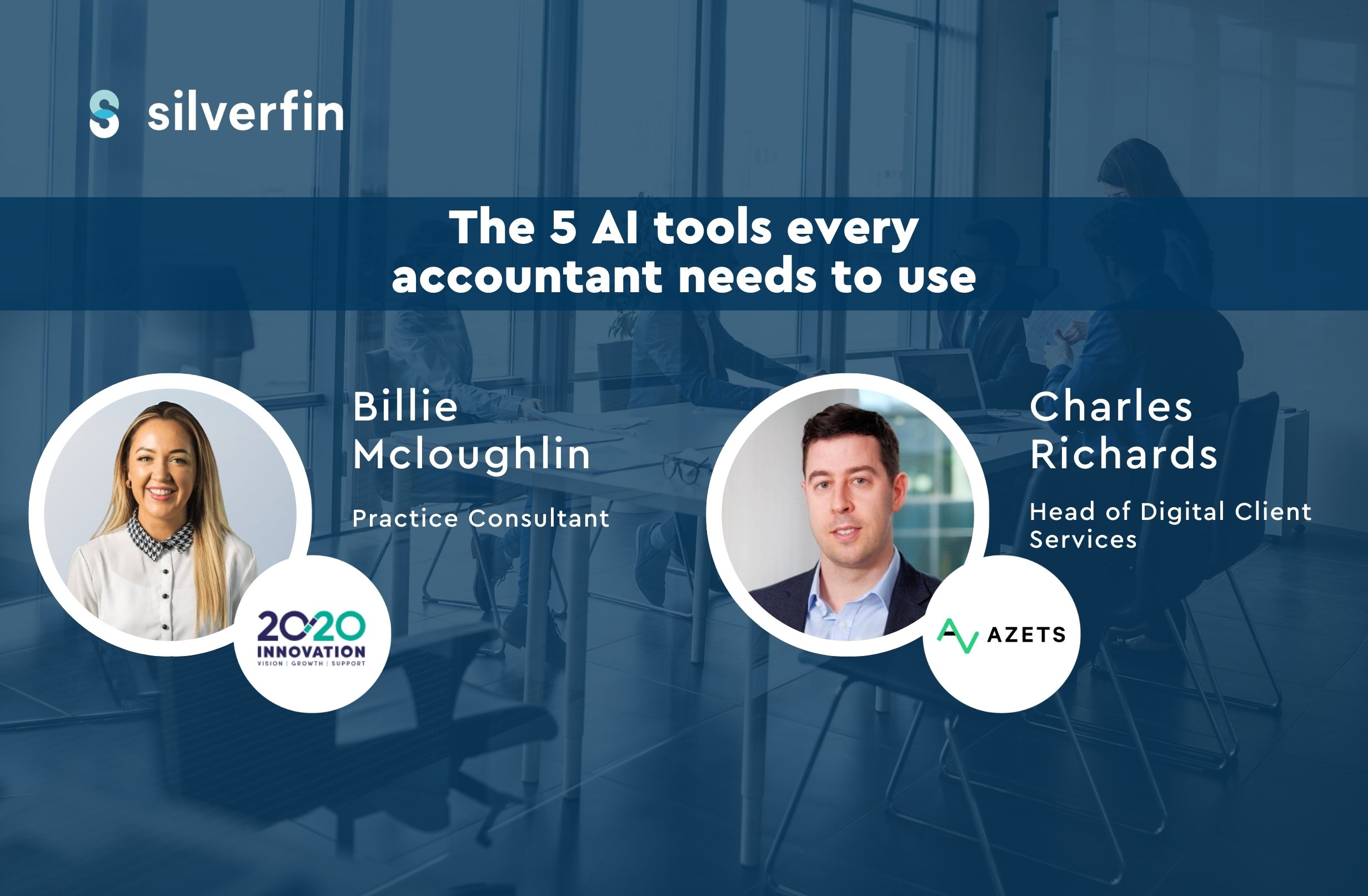I hosted a panel discussion at The Digital Accountancy Show exploring how companies can ensure technology delivers while enacting large-scale change or digital transformation projects.
I was joined by Andy Mackey, Azets Transformation Director, Fay Bordbar, Mazars Operations Manager for Accounting and Outsourcing Services, and Sophie Parkhouse, Albert Goodman Technical and Training Partner.
This is a summary of our conversation. We look at the key topics our panellists discussed, and share their recommendations on how accounting firms can get the most out of tech as well as people during complex change initiatives.
Best practices for successful digital transformation
No two digital transformation initiatives are the same — every firm has its own context and culture, hurdles and objectives. However, there are a few best practices that firms should keep in mind when implementing digital transformation initiatives.
Get leadership buy-in, but distribute accountability
For Fay, it’s crucial that leaders get behind the project and publicly express their support. “As a manager, I can’t sell complex transformation projects to my team without buy-in from the top. It’s virtually impossible”.
But while buy-in from the top gets your foot in the door, digital transformation projects will only succeed with the entire organisation’s support. That’s why Fay recommends picking a single champion for each team who’s personally responsible for ensuring the firm’s new technology delivers its intended benefits. “When you give people responsibility, ownership, and trust, they shine. We have people who’d never coded before who now code in Silverfin and absolutely love it”.
Andy agreed that distributing accountability was key, emphasising that it takes a whole team to transform large organisations. He even suggests bringing in non-accountants to help with the process — after all, accountants are busy enough dealing with client work.
Prioritise communication
To ensure change projects are successful, managers need to get comfortable with being uncomfortable. They must ask for their team’s opinions and genuinely want to hear about the problems they’re facing.
As Fay puts it, “Look, it’s not always nice to hear, but you have to listen, welcome the negatives and have those challenging conversations. Digital transformation inevitably requires ripping up the rulebook to some extent. You’re ditching systems and processes that people have become accustomed to, so there’s always going to be some pushback. Dig into what your team is afraid of and always lead with ‘why?’. Get to the heart of why they feel the way they do. Not only will this show you care, but it will also help you identify and overcome specific hurdles that stand in your way”.
Andy backed this up, saying: “It’s not easy changing people’s day jobs, so put yourself in the shoes of those on the ground. Sell the benefits to your staff. Emphasise that you’re transforming your processes because you want to create efficiencies, not make people redundant”.
He continued, “Automation has somewhat of a negative connotation, but this is completely illogical when you think about it. Firms use automation because they want to free accountants from the boring, low-value tasks that they hate doing anyway. Digital transformation will make your staff’s jobs significantly better—not worse”.
Change leaders should communicate clearly and often, checking in with their team, updating them on progress, and answering any questions they might have. As Andy puts it, “Change is hard, so do it with your team—not to them”.
Start small and grow
Sophie highlighted that many projects fail because firms go too big too soon. Instead, change leaders should create a small pilot in one part of the business and focus on generating tangible results on a small scale. If this is successful, they can then share this example with other departments to gain buy-in throughout the firm.
“Get a proof of concept before asking everyone to jump on board”, she suggests. “Remember: people trust their current systems and processes. You won’t get them to change their ways of working unless you can prove it’s worth the hassle”.
Common digital transformation pitfalls to avoid
Over the years, Fay, Andy, and Sophie have learned what to do when enacting digital transformation projects — but equally important, they’ve discovered what not to do.
Attaching specific labels to the project
Fay explained that firms should be careful with how they label transformation projects. At Mazars, they initially rolled out Silverfin by saying it would be a replacement for Excel. Except, that wasn’t the best comparison. Silverfin and Excel aren’t like-for-like tools, so employees began to question why Silverfin didn’t include certain features that they relied on when using Excel.
“I realised we’d made a mistake with how we labelled the project. Rather than making it seem like Silverfin was just replacing Excel, we should have instead framed it as a new way to approach our outsourcing work”, she said.
Keeping the same mindset as before
Sophie highlighted the mindset shift involved when implementing new tech. Firms that typically rely on legacy systems are used to big annual software updates that have to be proactively deployed but today’s tools are continually developing.
“Some colleagues grumbled that they could never keep on top of the tool as it keeps changing. Except, they failed to understand why it’s always changing: to solve the very problems and issues they used to complain about when using it. It’s evolving, but it’s improving”, she added.
Sophie also reinforced that change doesn’t just involve tech and systems — it’s also about people, mindsets, and attitudes. Remind staff that they can no longer get away with doing CPD once a year. Instead, they need to continually upskill to ensure they’re fit for purpose for their current role. New technology can help them do that as they learn new ways to do things but also technology can free up time which they can use to develop soft skills that are critical to the delivery of advisory services.
Building a business or benefits case
Andy told the audience that when he first started working out the business case for transformation at Azets, he discovered that, in common with most firms, their client data was spread everywhere and this impacted how these cases were built. Crucially, it was clear they had a goldmine of client data that they’d not been using —meaning the business cases they’d previously created needed a rethink.
“Do a deep dive into your company’s data and make sure you have everything in one place before you build out benefits cases”, he suggests. “Also, remember that benefits cases change—this is fine. In fact, you should expect it to happen”. This was a point that resonated with me as we’ve seen this with other Silverfin customers who’d achieved the most success from their digital transformation – they didn’t lock the project into single benefit cases but were willing to adapt them as the project evolved and more opportunities were identified.
Top tips for keeping staff engaged in change
Change management or digital transformation projects will only succeed if everyone is engaged throughout the process. Of course, this is easier said than done. So, how did our panellists ensure maximum engagement from their colleagues during complex digital transformation initiatives?
Gamification
Fay described how Mazars used gamification to boost engagement when implementing Silverfin. Each team was scored on how well they were using the tool, and they shared the results publicly. There was no naming and shaming teams that lagged behind—instead, they focused on championing those at the top.
The result? Teams at the bottom quickly focused on narrowing the gap, and Silverfin digital working papers were soon successfully embedded across all Outsourcing teams.
Linking the project to individual goals
For Sophie, it’s crucial that change leaders reinforce why people should buy into the project, linking its overall objective to individuals’ goals. “We’d tell employees that if they wanted to progress, they’d have to achieve a certain goal. For example, improve their recoveries or become more efficient and how could they do that by using Silverfin”.
Keep on checking in
Change projects can quickly lose momentum as employees become distracted with their daily duties and responsibilities. That’s why Andy consistently checked in with his colleagues at Azets, hosting regular webinars that were as engaging and relaxed as possible.
“I wanted to make the webinars interesting, useful, and very low-key. I was honest about how the project was progressing, sharing timelines, goals, next steps, and welcoming two-way discussions. It gave everyone an opportunity to speak their mind and be open about how they felt”. Andy’s approach worked wonders—over 2,500 staff attended the three sessions he put on.
Our team has seen this first hand. Those customers that have successfully implemented Silverfin shared one common trait: transparency. Managers kept their teams in the loop at all times and welcomed feedback, even if it wasn’t always positive.
Empower everyone from the bottom-up
Lastly, Sophie highlighted that firms must empower everyone from the bottom-up to ensure maximum engagement. There were instances at Albert Goodman when senior leaders would ask an employee to revert back to an old way of working. For example, to print a document so they could sign and scan it.
Their Silverfin implementation would’ve failed if juniors gave into these types of requests. Instead, they did just the opposite, reminding their managers that the firm now did everything within the Silverfin platform.
Embrace change, don’t shy away from it
An open mind about change is required in today’s fast-moving world. Firms of the future understand this, embracing the opportunities change brings while learning from previous projects that haven’t gone as intended.
It was great to hear the experiences of our customer experts at the Digital Accounting Show and to learn more about how they’ve successfully transformed their own firms, using Silverfin to increase efficiency, profitability, and the quality of their work.
Book a demo
to see how our accounting platform can help you deliver successful transformation at your firm.













